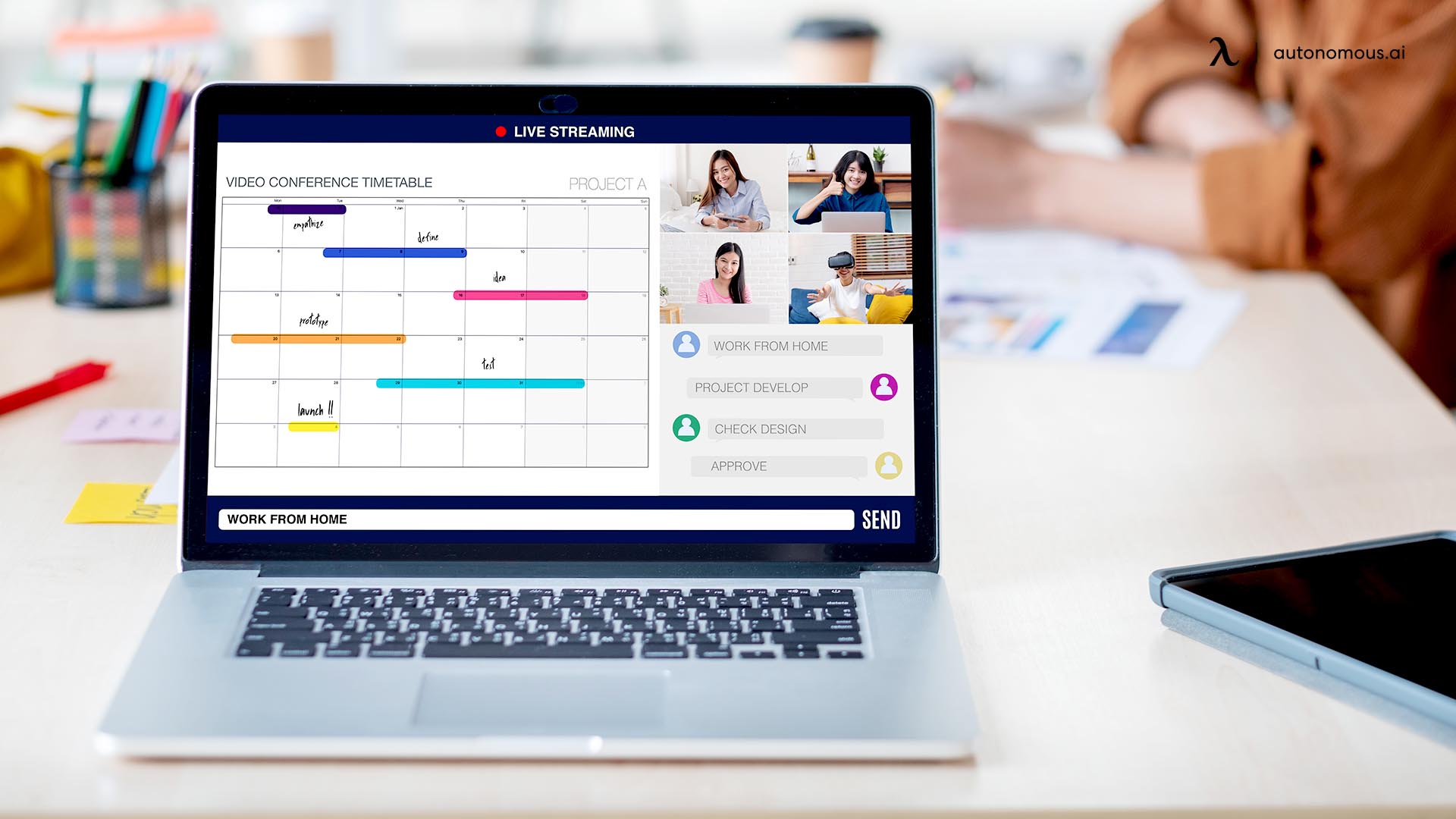/https://storage.googleapis.com/s3-autonomous-upgrade-3/static/upload/images/new_post/the-current-future-of-remote-work-2153-1623658305343.jpg)
The worldwide lockdown made many companies shift over to the hybrid work model almost overnight. It was a very abrupt change that is still in practice two years later. This telecommuting integration shift had more far-reaching impacts than we expected. Initially, companies only offered to work from home as a bonus perk or as an emergency option. Today, it has become a new norm, and people actually forget what it was like to work in an office! This remote work future trend will probably go beyond 2022. However, we are still hopeful that if we stay on track, we could see upcoming changes. In this article, we’ll try to sum up the current and future scenarios of remote working.
Remote working is a permanent feature
The number of employees working from home doubled in the last two years. Since productivity has been largely unaffected, the concept of remote working has now evolved from a job perk to a working model to be taken seriously. In fact, many companies are now planning on keeping the larger part of their workforce working from home even after the pandemic is over.

As of now, companies are following a remote work future and have put all employees on an indefinite period of remote working. They have plans on bringing them back to the workplace very slowly and carefully. Others have adopted a hybrid workforce, where only critical staff, like the IT or admin personnel, can visit the office location.
Companies are doing away with physical office space
There is another change in the future of work, where employers are getting rid of massive offices that they no longer use. This trend is the result of a cost-saving approach so companies can save their capital for important things like healthcare funding and IT expenditures. Some companies plan ongoing 100% remote, removing the need for a physical headquarters location, forgoing it so that they can save on costs.

The future remote workplace is now being redefined by its capability of providing cloud-based storage and other IT benefits rather than the number of offices they own. Of course, not everyone has the same plan of action. Some are trying to draw a balance between cost reduction and office-space reduction. They are trying out the hybrid workplace concept, where they combine the on-site and remote working strategies.
In this model, specific days are allotted to the future work employees for meeting or collaboration in person. These days are reserved for things that teams need to do together like brainstorming, presentations, team-building strategies, etc. The remote days are kept for those tasks that can be done individually. In other words, we will have to forget about cubicles and invest in robust home desks.
Work becomes more proactive and engagement-driven

We can’t deny the remote work future. The hybrid remote work calls for a more active stance when it comes to facilitating and building business. At the office, it was much easier to showcase our skills and other business advancements. In the virtual workspace, employees have to find innovative ways to amplify their skills and gain access to upcoming opportunities. Leaders then have to create those opportunities that let employees participate or be active proponents during hybrid working to boost their enthusiasm and help them stand out.
Higher adoption of online software and tools

In order to promote faster and clearer remote collaboration, the whole communication framework had to be revised. So, good software became the top priority as more people adopted new telecommuting tools. Today, video calls and conferences are the norms, as it permits engagement and aids presentation of visuals.
Now, there is a growing demand for a smoother remote work future, lighter apps that work with all kinds of systems and work files. Some popular apps have already been updated several times to improve productivity tracking, get better technical support, etc.
Performance management has been revised
The way we approach performance management has changed drastically. The main objective of any work process is the quality and amount of work delivered rather than the number of working hours recorded. At some point, new job roles were created to manage the gaps that the new remote working models had created.

For example, a remote work specialist could build an entire remote working plan entailing all resources, and an IT expert can set up a seamless network that pulls all PCs into one network. Or perhaps, a communication specialist could manage an increased level of engagement with other employees, clients and consumers. To be more efficient, leaders had to rethink how they approached performance reviews. This is no longer an isolated, annual process but one that is ongoing instead.
This makes it easier for managers to assist employees in fulfilling their responsibilities, job expectations, etc. It also helps them to set new goals, and picks out performance metrics too. All performance metrics have been relaxed as offices are now trying to build a human-centric company culture. This removes staff performance as a top priority in favor of worker safety and employee well-being.
Increased need for upskilling
Digitalization is one of the reasons why remote working works and how most businesses are operating. For work from home to be successful, employees are in need of reskilling and even shift away from their existing role or adapt to modified ones. These transitions are easier when they are prepared with the skills for them.

Developing these upskilling programs is another role that companies now have to take up. It is a mix of internal training, sessions, workshops, and effective feedback. Some employees have also taken on educational and digitalization programs to get familiar with the new tools they have to use. It helps to go towards those skills required by companies.
This helps employees understand what they lack in remote work future, improve on the skills they already have, and craft skill sets in new areas of function. Employees are then better equipped to respond to changes in work and work from home easily.
Subscribe for a 10% discount on your first order.
Sign up for our weekly update and be the first to know about our specials & promotions.

/https://storage.googleapis.com/s3-autonomous-upgrade-3/production/ecm/240417/april-10-off-offer-2024-1920x540-CTA.jpg)
/https://storage.googleapis.com/s3-autonomous-upgrade-3/production/ecm/240417/april-10-off-offer-2024-720x1200-CTA.jpg)
/https://storage.googleapis.com/s3-autonomous-upgrade-3/production/ecm/240415/bulk-order-apr-2024-offer-720x1200-CTA-min.jpg)

/https://storage.googleapis.com/s3-autonomous-upgrade-3/static/upload/images/new_post_author/admin-1.png)